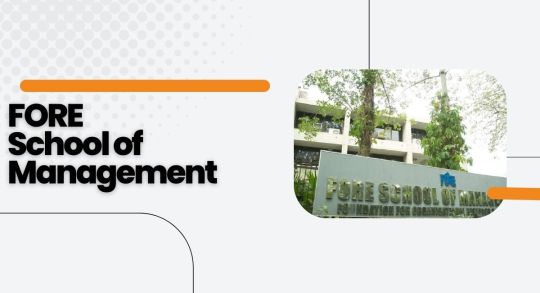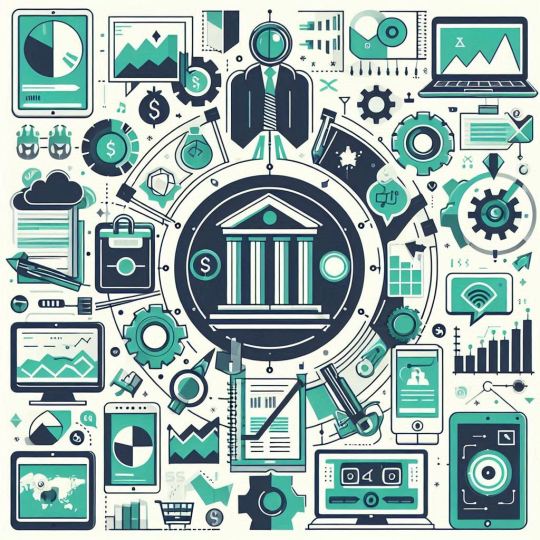#top facilities management software
Explore tagged Tumblr posts
Text
#Retail operations Software#Visual merchandising audit checklist#Retail task management platform#visual merchandising audit#retail task management software#retail store task management software#management checklist#task management software for retail industry#best task management software solution#task management software solution#sop for retail merchandising#top facilities management software#facility management software#sop for store management#Operations Management software#online task management software#operation management solution#operation management software#task management platform#retail workforce management systems#retail workforce management solutions#SOP management software#SOP Management#best facility management software#facility management system software#facility management tools#task management tool#task management workflow software#sales audit checklist#digital facility management system
1 note
·
View note
Text
Top 10 Facility Management Software Development Companies
Explore the vital role of facility management software in optimizing business operations across industries like healthcare, retail, and logistics. Top 10 facility management software development companies blog delves into how modern FM solutions enable real-time asset tracking, proactive maintenance, and data-driven decision-making, reducing costs and enhancing service continuity. Discover the benefits of tailored FM software, from improving operational efficiency to ensuring regulatory compliance. We also spotlight leading companies in FM software development, showcasing their innovative approaches and technology integration. Learn how these tools can transform facility management, extend asset lifecycles, and pave the way for a more sustainable and efficient future.
1 note
·
View note
Text
The Importance of Technology in Facility Management Education

Nurturing Future Facility Management Experts
Facility management universities serve as hubs for cultivating the next generation of professionals equipped with the expertise to oversee and optimize diverse built environments. These institutions offer specialized programs that cover a range of topics, from space utilization and maintenance to sustainability and technology integration. By imparting practical skills and theoretical knowledge, they empower students to excel in the complex field of facility management.
Comprehensive Curriculum for Real-World Challenges
At facility management universities, students engage with a comprehensive curriculum designed to address the multifaceted challenges of modern facility administration. Courses encompass a broad spectrum, including strategic planning, resource allocation, risk management, and advanced technology implementation. Through hands-on projects, internships, and industry collaborations, students gain a holistic understanding of the discipline, preparing them to navigate the complexities of maintaining functional and efficient facilities.
Bridge to a Dynamic and In-Demand Career Path
Facility management universities bridge the gap between academic learning and real-world application, offering students a direct pathway to a dynamic and in-demand career. Graduates emerge as adaptable professionals capable of managing the intricate interplay between people, spaces, and technology within various sectors, such as commercial, healthcare, and hospitality. With a strong foundation from these universities, aspiring facility managers are primed to contribute meaningfully to the success of organizations by creating optimal and sustainable environments.
#top facility management softwares#estimation and quoting services#facility management universities#trusted facility management platforms
0 notes
Text
Vittoria Elliott at Wired:
Elon Musk’s takeover of federal government infrastructure is ongoing, and at the center of things is a coterie of engineers who are barely out of—and in at least one case, purportedly still in—college. Most have connections to Musk and at least two have connections to Musk’s longtime associate Peter Thiel, a cofounder and chairman of the analytics firm and government contractor Palantir who has long expressed opposition to democracy. WIRED has identified six young men—all apparently between the ages of 19 and 24, according to public databases, their online presences, and other records—who have little to no government experience and are now playing critical roles in Musk’s so-called Department of Government Efficiency (DOGE) project, tasked by executive order with “modernizing Federal technology and software to maximize governmental efficiency and productivity.” The engineers all hold nebulous job titles within DOGE, and at least one appears to be working as a volunteer. The engineers are Akash Bobba, Edward Coristine, Luke Farritor, Gautier Cole Killian, Gavin Kliger, and Ethan Shaotran. None have responded to requests for comment from WIRED. Representatives from OPM, GSA, and DOGE did not respond to requests for comment. Already, Musk’s lackeys have taken control of the Office of Personnel Management (OPM) and General Services Administration (GSA), and have gained access to the Treasury Department’s payment system, potentially allowing him access to a vast range of sensitive information about tens of millions of citizens, businesses, and more. On Sunday, CNN reported that DOGE personnel attempted to improperly access classified information and security systems at the US Agency for International Development (USAID), and that top USAID security officials who thwarted the attempt were subsequently put on leave. The AP reported that DOGE personnel had indeed accessed classified material. “What we're seeing is unprecedented in that you have these actors who are not really public officials gaining access to the most sensitive data in government,” says Don Moynihan, a professor of public policy at the University of Michigan. “We really have very little eyes on what's going on. Congress has no ability to really intervene and monitor what's happening because these aren't really accountable public officials. So this feels like a hostile takeover of the machinery of governments by the richest man in the world.”
[...] “To the extent these individuals are exercising what would otherwise be relatively significant managerial control over two very large agencies that deal with very complex topics,” says Nick Bednar, a professor at University of Minnesota’s school of law, “it is very unlikely they have the expertise to understand either the law or the administrative needs that surround these agencies.” Sources tell WIRED that Bobba, Coristine, Farritor, and Shaotran all currently have working GSA emails and A-suite level clearance at the GSA, which means that they work out of the agency’s top floor and have access to all physical spaces and IT systems, according a source with knowledge of the GSA’s clearance protocols. The source, who spoke to WIRED on the condition of anonymity because they fear retaliation, says they worry that the new teams could bypass the regular security clearance protocols to access the agency’s sensitive compartmented information facility (SCIF), as the Trump administration has already granted temporary security clearances to unvetted people. This is in addition to Coristine and Bobba being listed as “experts” working at OPM. Bednar says that while staff can be loaned out between agencies for special projects or to work on issues that might cross agency lines, it’s not exactly common practice.
WIRED’s report on the 6 college-aged men between 19 and 24 that are shaping up DOGE in aiding and abetting in co-”President” Elon Musk’s technofascist takeover.
#Elon Musk#DOGE#Department of Government Efficiency#Trump Administration II#General Services Administration#Office of Personnel Management#Scott Bessent#USAID#Akash Bobba#Edward Coristine#Luke Farritor#Gautier Cole Killian#Gavin Kliger#Ethan Shaotran#Treasury Department#Musk Coup
59 notes
·
View notes
Text

Here are the changes coming to all Meta owned platforms (Facebook, Instagram, Threads and WhatsApp) now that Mark Zuckerberg has openly embraced the racism, bigotry & misogyny that permeates the MAGA movement - from a NYT article:
"On Tuesday, most of Meta's 72,000 employees learned of Mr. Zuckerberg's plans along with the rest of the world.
The Silicon Valley giant said it was overhauling speech on its apps by loosening restrictions on how people can talk about contentious social issues such as immigration, gender and sexuality.
It killed its fact-checking program that had been aimed at curbing misinformation and said it would instead rely on users to police falsehoods.
And it said it would insert more political content into people's feeds after previously de-emphasizing that very material."
(You can take a wild guess which political views will be prioritized on Meta platforms - just look at X/Twitter).
The article continues: "On Friday, Meta's makeover continued when the company told employees it would end its work on diversity, equity and inclusion. It eliminated its chief diversity officer role, ended its diversity hiring goals that called for the employment of a certain number of women and minorities, and said it would no longer prioritize minority-owned businesses when hiring vendors.
In interviews, more than a dozen current and former Meta employees, executives and advisers to Mr. Zuckerberg described his shift as serving a dual purpose. It positions Meta for the political landscape of the moment, with conservative power ascendant in Washington as Mr. Trump takes office on Jan. 20. More than that, the changes reflect Mr. Zuckerberg's personal views of how his $1.5 trillion company should be run — and he no longer wants to keep those views quiet.
Zuckerberg decided to promote Joel Kaplan (a staffer under former President George W. Bush, and he appeared at the New York Stock Exchange with Vice President-elect J.D. Vance and Trump in December) to Meta's head of global public policy to carry out the changes and deepen Meta's ties to the incoming Trump administration, replacing Nick Clegg, a former deputy prime minister of Britain who had handled policy and regulatory issues globally for Meta since 2018.
The night before Meta's announcement, Mr. Kaplan held individual calls with top conservative social media influencers, two people said.
The company also removed the transgender and nonbinary "themes" on its Messenger chat app, which allows users to customize the app's colors and wallpaper, two employees said. 404 Media earlier reported on the change.
That same day at Meta's offices in Silicon Valley, Texas and New York, facilities managers were instructed to remove tampons from men's bathrooms, which the company had provided for nonbinary and transgender employees who use the men's room and who may have required sanitary pads, two employees said.
On Workplace, Meta's Slack-like internal communications software, employees began arguing over the changes. In the @Pride employee resource group, where workers who support L.G.B.T.Q. issues convene, at least one person announced their resignation as others privately relayed to each other that they planned to look for jobs elsewhere, two people said."
Article's summary ends
There you go. Mark Zuckerberg is totally convinced that they (Conservatives and oligarchs) have won the "Culture Wars". And he's betting the future of Meta & its platforms, on Far-Right fascism being a permanent fixture in the American political and cultural landscape.
However, remember that these fuckers only have the power that they have because many people continue to use Facebook, Instagram, Threads and WhatsApp.
Stop giving Fuckerberg that power. Deactivate all your Meta accounts.
BTW, before you deactivate your Instagrams, tell the celebs and influencers that you follow there why you're leaving. Maybe they'll do the same - If (and that's a big IF) they actually care and give a damn about the progressive issues they claim to care about.
#meta#mark zuckerberg#facebook#instagram#threads#whatsapp#far right#fascism#woke#dei#anti woke#chuds
3 notes
·
View notes
Text
FORE School of Management: A Premier Institution for Future Business Leaders
When it comes to pursuing a management degree in India, FORE School of Management stands out as a top choice for aspiring business leaders. Established in 1981, the institute has consistently been ranked among the best business schools in the country. Located in the heart of South Delhi, FORE (Foundation for Organizational Research and Education) offers a dynamic learning environment that blends academic rigor with practical experience. This blog delves into why FORE School of Management should be on your radar if you’re looking to excel in the world of business.

Academic Excellence at FORE School of Management
One of the primary reasons behind the success of FORE School of Management is its commitment to academic excellence. The institute offers a range of programs including:
Post Graduate Diploma in Management (PGDM): FORE’s flagship program, recognized for its cutting-edge curriculum that aligns with industry trends.
PGDM in International Business: A specialized program focusing on the global aspects of business management.
Executive PGDM: Tailored for working professionals, this course offers flexible learning without compromising on content.
PGDM in Big Data Analytics: Preparing future leaders to handle complex data-driven decision-making.
Each of these programs is designed to equip students with both theoretical knowledge and practical skills necessary for navigating today’s business challenges.
Industry-Centric Curriculum
FORE School of Management understands that the corporate world is constantly evolving. To ensure that students are prepared for these changes, the curriculum is regularly updated in consultation with industry experts. The school’s focus on experiential learning through case studies, live projects, internships, and workshops sets it apart from other business schools. This approach bridges the gap between classroom learning and real-world business applications, ensuring that graduates are industry-ready from day one.
World-Class Faculty
A business school is only as good as its faculty, and at FORE School of Management, students are mentored by some of the best minds in the academic and business worlds. The faculty comprises experienced academicians, researchers, and industry professionals who bring a wealth of knowledge and real-world insights into the classroom. Their expertise spans various disciplines, including marketing, finance, operations, human resources, and data analytics, among others.
State-of-the-Art Infrastructure
FORE School of Management provides students with a modern, tech-enabled campus that fosters learning and innovation. The school boasts:
Smart Classrooms: Equipped with the latest technology to enhance interactive learning.
Library and Information Centre: A vast repository of books, journals, and digital resources for research and study.
Computer Labs: Cutting-edge infrastructure for data analytics and other specialized software training.
Hostel Facilities: Comfortable accommodation for outstation students, ensuring a conducive living environment.
The campus also offers various recreational and fitness facilities, making it a holistic space for personal and professional development.
Strong Industry Connections and Placement Records
One of the standout features of FORE School of Management is its robust placement record. The institute has consistently attracted top-tier companies across sectors for campus recruitment. Students have landed roles in organizations like Deloitte, KPMG, EY, PwC, Nestlé, HCL, and many more.
The school’s Corporate Interaction Division (CID) plays a crucial role in fostering these relationships by organizing seminars, guest lectures, and industry visits. These initiatives provide students with the opportunity to network with industry leaders and gain valuable insights into current business practices.
Focus on Entrepreneurship and Innovation
In today’s fast-paced business world, the ability to innovate is crucial for success. FORE School of Management encourages entrepreneurial thinking and supports budding entrepreneurs through its various initiatives. The institute has an Entrepreneurship Development Cell (EDC) that provides mentorship, resources, and opportunities for students to turn their business ideas into reality.
Global Exposure
In a globalized business environment, having international exposure can set you apart. FORE School of Management offers various exchange programs and partnerships with international universities, providing students with a global perspective on business management. These programs help students gain insights into different markets, cultures, and business practices, making them well-rounded professionals ready to take on global challenges.
Conclusion
Choosing the right business school is a critical decision, and FORE School of Management offers everything you need to succeed in today’s competitive business landscape. With its strong focus on academic excellence, industry relevance, innovation, and global exposure, FORE continues to be a leader in management education. If you’re looking to build a successful career in business, FORE School of Management is undoubtedly an institution worth considering.
#fore school of management#education#higher education#colleges#education news#admissions#universities#FORE School#mba#news#students#educationnews
2 notes
·
View notes
Text
Top 10 Electronic Health Records Apps Efficient Data Management | Grapes IDMR
In today’s fast-paced healthcare landscape, efficient data management is vital for enhancing patient care, reducing errors, and ensuring seamless workflows. Electronic Health Records (EHR) software is key to achieving these goals by centralizing and digitizing medical records. Grapes IDMR is committed to helping healthcare providers identify the best EHR solutions, and we've curated a list of the top 10 EHR apps that can transform medical data management in any healthcare facility.

Let’s dive into one of the top picks:
1. Doctor-G App Specifications
Teleconsultation: Doctor-G revolutionizes patient care by offering seamless teleconsultation features, allowing healthcare providers to conduct virtual appointments with patients from anywhere. This not only enhances accessibility for patients but also ensures that doctors can provide timely medical advice without the need for in-person visits.
Online Prescription: Doctor-G’s online prescription functionality allows doctors to easily generate and send prescriptions directly to patients or their preferred pharmacies. This feature minimizes the risk of prescription errors, streamlines the medication dispensing process, and enhances the overall patient experience by making it more convenient to receive necessary medications.
History View: Doctor-G provides a comprehensive history view that allows healthcare professionals to access and review patients' medical histories effortlessly. This feature ensures that doctors have all the necessary information at their fingertips, facilitating informed decision-making and personalized patient care.
Integrated Features for Enhanced Healthcare Management
Doctor-G stands out with its robust specifications designed to meet the dynamic needs of modern healthcare. The Teleconsultation feature enables doctors to conduct virtual visits, expanding access to care and reducing the need for physical appointments. The Online Prescription system simplifies the process of prescribing medications, ensuring accuracy and convenience for both doctors and patients. Additionally, the History View provides a detailed and easily accessible record of patients’ medical histories, empowering healthcare providers to make informed decisions and deliver personalized care. These integrated features make Doctor-G a comprehensive solution for efficient and effective healthcare management.
2. Grapes BSA-PRO Specifications
Patient Vitals: Grapes BSA-PRO enables healthcare professionals to easily monitor and track patients' vital signs, such as heart rate, blood pressure, and temperature. This real-time data helps doctors stay updated on their patient's health status, ensuring timely interventions and better patient care.
Surgery Information: The app provides a dedicated section for storing and managing surgery details, including surgical procedures, dates, and post-operative care instructions. This feature helps doctors and medical staff maintain a clear and organized record of all surgeries for each patient, making follow-up care smoother and more efficient.
Diagnostic Results: Grapes BSA-PRO ensures that diagnostic test results, such as blood tests, X-rays, and MRIs, are easily accessible within the app. This feature allows doctors to view and analyze test outcomes quickly, supporting faster and more accurate diagnoses, and enabling better-informed treatment decisions.
A Comprehensive Solution for Healthcare Providers
Grapes BSA-PRO combines essential features like Patient Vitals, Surgery Information, and Diagnostic Results to offer a well-rounded tool for healthcare professionals. Centralizing critical medical data in one app empowers doctors to provide timely and efficient care, improving the overall patient experience and enhancing healthcare management.
3. Grapes IDMR Specifications
Patient Records: Grapes IDMR provides a comprehensive platform for managing patient records, allowing healthcare professionals to store, access, and update vital patient information easily. From medical history to treatment plans, all data is securely organized in one place, enabling seamless healthcare delivery and personalized care.
Billing: The integrated billing feature in Grapes IDMR simplifies the financial aspect of healthcare management. It automates the billing process, ensuring accuracy in generating invoices and tracking payments. This functionality reduces administrative workload and provides a smoother payment experience for patients and healthcare facilities.
Appointments: Grapes IDMR streamlines appointment scheduling by offering a user-friendly interface for managing patient appointments. Healthcare providers can easily schedule, modify, and track patient visits, ensuring efficient time management and reducing scheduling conflicts.
An All-in-One Solution for Healthcare Management Grapes IDMR combines essential features like Patient Records, Billing, and Appointments to offer a holistic solution for healthcare facilities. By consolidating critical data and processes in one platform, Grapes IDMR enhances operational efficiency, ensuring smoother workflows and improved patient care.
4. My-Grapes Specifications
Easily Book Appointments: My-Grapes simplifies the appointment booking process for both patients and healthcare providers. With a user-friendly interface, patients can easily schedule appointments, while healthcare staff can manage and organize bookings efficiently, ensuring a smooth and streamlined experience.
Generate Bills: The app offers a convenient billing feature that allows healthcare providers to generate accurate and detailed bills with just a few clicks. This reduces the time spent on administrative tasks, ensures billing accuracy, and provides patients with a hassle-free payment process.
Vital Patient Information: My-Grapes securely stores and organizes vital patient information, including medical history, test results, and treatment plans. This ensures that healthcare providers have quick access to critical data, improving patient care and enabling informed medical decisions.
A Simplified Approach to Healthcare Management My-Grapes offers a complete solution with features such as Easily Book Appointments, Generate Bills, and Vital Patient Information. By streamlining these key processes, My-Grapes enhances operational efficiency for healthcare providers while improving the overall patient experience.
5. Grapes MIS Specifications
OP/IP Status Updates: Grapes MIS provides real-time updates on both outpatient (OP) and inpatient (IP) statuses. This feature allows healthcare providers to track patient progress, manage care efficiently, and ensure timely interventions by having up-to-date information on patient activities and conditions.
Live Financial Activity Tracking: The app includes a robust financial tracking system that monitors live financial activity. Healthcare facilities can keep a close watch on revenue streams, expenditures, and overall financial health, facilitating better budget management and financial planning.
Bed Occupancy Status: Grapes MIS offers a comprehensive view of bed occupancy status across the facility. This feature helps in managing hospital resources effectively by providing real-time data on available and occupied beds, aiding in efficient patient placement and resource allocation.
Optimizing Hospital Operations Grapes MIS enhances hospital management with key features like OP/IP Status Updates, Live Financial Activity Tracking, and Bed Occupancy Status. These tools provide healthcare facilities with critical insights and real-time data, supporting better operational decisions and improving overall efficiency.
6. Third Eye Specifications
Hospital Asset Management: Third Eye offers a robust system for managing hospital assets, including medical equipment, supplies, and infrastructure. This feature helps hospitals track and maintain their assets efficiently, ensuring that all equipment is in optimal condition and available when needed.
Essential Equipment and Resources: The app provides comprehensive oversight of essential hospital equipment and resources. By monitoring usage, maintenance schedules, and inventory levels, Third Eye ensures that critical resources are well-managed and readily available for patient care.
Efficient Asset and Resource Management with Third Eye
Third Eye enhances hospital management with features such as Hospital Asset Management and oversight of Essential Equipment and Resources. By offering detailed tracking and management capabilities, Third Eye helps healthcare facilities maintain operational efficiency and ensure that all necessary resources are in place to support quality patient care.
7. Vedha Specifications
Real-Time Inventory Tracking: Vedha offers real-time inventory tracking, providing up-to-date information on stock levels and usage. This feature ensures that healthcare providers can monitor inventory accurately and make informed decisions regarding supply management.
Automated Reordering: With Vedha’s automated reordering system, healthcare facilities can streamline their supply chain management. The app automatically generates purchase orders when stock levels fall below predefined thresholds, ensuring that essential items are always available without manual intervention.
Batch and Expiry Management: Vedha helps manage the lifecycle of medical supplies and pharmaceuticals through batch and expiry management. The app tracks expiration dates and batch numbers, reducing the risk of using expired or incorrect products and enhancing patient safety.
Streamlined Inventory and Supply Management with Vedha:
Vedha simplifies inventory management with features like Real-Time Inventory Tracking, Automated Reordering, and Batch and Expiry Management. These functionalities work together to optimize supply chain operations, ensuring that healthcare facilities maintain accurate inventory levels, reduce waste, and enhance overall efficiency.
8. G Call Specifications
Alert Call for Attender and Housekeeping: G Call provides a streamlined alert system for requesting assistance from attendants and housekeeping staff. This feature ensures that help is promptly dispatched when needed, improving the efficiency of hospital operations and enhancing patient care.
Emergency Alert Notifications: The app includes an emergency alert system that sends instant notifications to relevant hospital staff in case of critical situations. This feature facilitates quick response times during emergencies, ensuring that necessary actions are taken swiftly to address urgent medical needs.
Enhancing Hospital Efficiency with G Call
G Call enhances hospital management through features like Alert Call for Attender and Housekeeping and Emergency Alert Notifications. By facilitating prompt communication and quick response to emergencies, G Call ensures that hospital staff can efficiently address patient needs and maintain smooth hospital operations.
9. 360Degree Specifications
Remote Computer Control: 360Degree allows users to control computer systems remotely using their smartphones. This feature provides flexibility and convenience, enabling users to manage computer operations from anywhere, whether they’re on the go or away from their workstation.
Shutdown, Restart, Logoff, Lock: The app offers a range of remote functions including Shutdown, Restart, Logoff, and Lock. These capabilities help users manage their computer systems efficiently, ensuring that operations can be adjusted or secured as needed without physical access to the devices.
Flexible Remote Management with 360Degree
360Degree revolutionizes computer management with features like Remote Computer Control and the ability to shut down, Restart, log off, and Lock systems directly from your smartphone. This functionality provides users with enhanced control and flexibility, making it easier to manage computer operations efficiently and securely from any location.
10. G-office Specifications
Office File Management App: G-office is a comprehensive solution for managing office files, allowing users to organize, access, and edit documents efficiently. The app supports various file formats and provides tools for smooth document handling, ensuring that users can easily manage their office paperwork.
Data Security and Encryption: G-office prioritizes data security with advanced encryption protocols that protect sensitive information. This feature ensures that all files and documents are secure from unauthorized access and potential data breaches, maintaining confidentiality and integrity.
Cloud Storage Integration: The app integrates seamlessly with cloud storage services, enabling users to store and access their files from any device with internet connectivity. This feature ensures that documents are always available and backed up, facilitating collaboration and remote work.
Efficient and Secure File Management with G-office
G-office offers a robust platform for Office File Management, enhanced by features like Data Security and Encryption and Cloud Storage Integration. By providing secure document handling and flexible cloud access, G-office ensures that users can efficiently manage their office files while maintaining high levels of security and convenience.
Conclusion
In the evolving landscape of healthcare technology, selecting the right Electronic Health Records (EHR) software is crucial for enhancing operational efficiency and patient care. Our list of the Top 10 EHR Apps showcases a range of solutions designed to streamline medical data management, from teleconsultation and online prescriptions to real-time inventory tracking and remote computer control.
Each app on our list, including standout options like DOCTOR-G, Grapes BSA-PRO, and Vedha, offers unique features tailored to meet diverse healthcare needs. Whether it's facilitating virtual appointments, managing patient records, or ensuring the efficient handling of medical resources, these EHR apps provide comprehensive tools to improve healthcare delivery.
#grapesidmr#grapesinnovativesolutions#jeraldnepoleon#hms software#healthcare management software#my grapes#vedha#360degree#gcall#goffice#doctorg#top10HMSsoftware
2 notes
·
View notes
Text
Best Business Software Tools in 2024
The right software tools can help increase productivity, draft operations more efficiently and promote company growth in today's high-paced business environment. Whether you are a start-up or an existing enterprise the following business software is necessary to improve different areas of your business.
1. Project Management: ClickUp

It is a feature-laden project manager that lets you handle tasks, projects, and workflows of all types. Its ease of use and user-friendly interface, complimented with diverse dashboards cater to audiences between small teams and large organizations. Task assignments, time tracking, goal setting, and collaboration options allow you to stop hopping between spreadsheets and emails so your projects are complete efficiently.
2. CRM–– Zoho CRM
Zoho CRM — Your Intelligent Customer Relationships Management System. Among other features, it has lead management, sales automation, and analytics to make sales performance improve on a consistent streamline both administrative aspect as well as customer satisfaction. Due to its integration capabilities with other Zoho products, as well as most third-party applications, It has become a flexible option for businesses that are ready to supercharge their customer relationship management.
3. Accounting: Zoho Books

Zoho Books- The Best Accounting Software for Business Owners Invoicing, expense tracking and financial reporting are some of its features. You can also rest assured that your taxes are being handled correctly and always have the latest view of your financial health to help you manage your finances better.
4. HR Management: monday. com HR
It is a complete human resources management software that helps companies to better structure their workforce. This system provides with facilities like employee on boarding, performance tracking, payroll management etc. With the platform's ease of use, UI simplicity, and automation capabilities in HR processes that would otherwise take hours away from key HR initiatives.
5. Payroll: OnPay

OnPay is an excellent payroll software for businesses of all sizes. It is a cloud payroll software for businesses that ensures complete compliance and automation of top-class payroll calculations, tax filings & employee payments. Additionally, OnPay provides HR and benefits management tools, effectively providing a full-fledged employee pay management solution.
6. Point-of-Sale (POS): eHopper
Versatile Point of Sale Software for Businesses Up To Mid-Sized It offers services like Inventory management, sales tracking and customer management. This makes eHopper a perfect choice for businesses that intend to simplify their sales operations using an affordable and intuitive POS system.
7. Inventory Management: Cin7

While there are plenty of other inventory management systems available, Cin7 stands out as one of the most popular options for small to mid-size businesses (SMBs) looking to get their stock levels, orders and supply chain operations under control. These functionalities consist of real-time inventory monitoring, order processing and e-commerce platform integration. With the powerful feature set of Cin7, businesses can keep inventory at an optimal level and fulfill customer demands to the hilt.
8. Website Builder: Weebly
Weebly is the website builder that you can also use to build your site or blog. It has lots of customizable templates, drag-and-drop functionality, and e-commerce ready to go. With Weebly, you can create a professional website even if you are a tech noob and give your business the relevant online visibility it needs.
9. Recruiting: ZipRecruiter

ZipRecruiter: Popular rated job search app for businesses on board. They provide hiring solutions through features like job posting candidates filtering and tracking the application. AI-powered matching from ZipRecruiter surfaces more relevant candidates to businesses faster.
10. VPN: NordVPN
It is a secure, encrypted VPN application that will make sure that you and your business stay safe as you work with the web. It provides features of encrypted connections, threat protection and global server access as well. In this way, It guarantees secure data in companies and privacy on internet.
Conclusion
The business software tools a company uses are very important to increase productivity and power growth. The above-mentioned tools are some of the best & flexible according to the fact which can assist businesses for any sized groups and help them attain their desired objectives. Implementing these tools in your operations can also help speed up processes and lead to higher customer satisfaction, as well as allow you to be on top of the competition.
#business#business growth#innovation#startup#entrepreneur#100 days of productivity#project management#sales#payroll#hr management#hr software#hr services#ai#artificial intelligence#technology#tech#techinnovation
2 notes
·
View notes
Text
Discover Excellence in Education at Himalayan Institute of Technology, Dehradun
Are you searching for a prestigious institution to pursue higher education? Look no further than the Himalayan Institute of Technology (HIT) in Dehradun. Nestled in the picturesque landscapes of the Himalayas, HIT offers an array of courses designed to provide students with a comprehensive and practical learning experience. With affiliations to both HNGBU and SDSU universities, HIT stands as a beacon of quality education and professional development.
Explore Our Diverse Course Offerings
At Himalayan Institute of Technology, we offer a variety of undergraduate programs tailored to meet the needs of today’s dynamic job market. Our courses include:
Bachelor of Commerce (B.Com)
Our B.Com program is designed to equip students with foundational knowledge in commerce, accounting, finance, and business management. With a focus on practical skills and industry insights, our graduates are well-prepared for careers in various sectors, including banking, finance, and corporate management.
Bachelor of Business Administration (BBA)
The BBA program at HIT focuses on developing leadership and entrepreneurial skills. Students gain a deep understanding of business operations, strategic management, and organizational behavior. Our BBA graduates are highly sought after by top companies and startups alike.
Bachelor of Hotel Management (HM)
Our HM program is perfect for those looking to excel in the hospitality industry. With comprehensive training in hotel operations, food and beverage management, and customer service, students are prepared to take on key roles in hotels, resorts, and other hospitality enterprises.
Bachelor of Computer Applications (BCA)
The BCA course at HIT is designed for students interested in the world of information technology. Covering topics like programming, software development, and database management, this program prepares students for successful careers in IT and software development.
Bachelor of Science in Information Technology (B.Sc IT)
Our B.Sc IT program provides students with in-depth knowledge of computer systems, networking, and information security. This course is ideal for those aiming to become IT professionals, system administrators, or cybersecurity experts.
Why Choose Himalayan Institute of Technology?
Affiliated with HNGBU and SDSU Universities: Our affiliations with Hemwati Nandan Bahuguna Garhwal University (HNGBU) and Sri Dev Suman Uttarakhand University (SDSU) ensure that our programs meet high academic standards and provide students with recognized qualifications.
Experienced Faculty: Our team of highly qualified and experienced faculty members are dedicated to providing students with the best education and guidance.
State-of-the-Art Facilities: HIT boasts modern classrooms, well-equipped laboratories, and a comprehensive library to support students in their academic pursuits.
Industry Connections: We maintain strong ties with various industries, offering students opportunities for internships, placements, and hands-on experience.
Holistic Development: At HIT, we emphasize the overall development of our students, encouraging participation in extracurricular activities, sports, and cultural events.
Join Us at Himalayan Institute of Technology
Embark on a journey of academic excellence and professional success with the Himalayan Institute of Technology, Dehradun. Visit our website at http://hitdoon.com for more information on admissions, courses, and campus life. Discover why HIT is the preferred choice for aspiring professionals in commerce, business administration, hotel management, computer applications, and information technology.
Choose HIT and take the first step towards a promising future.
2 notes
·
View notes
Text
Best IT Training Institute in Bangladesh
In the land where rivers weave tales and green fields stretch to the horizon, a digital revolution whispers through the air. Bangladesh, now a rising star in the tech cosmos, demands the finest IT training to nurture its future innovators.

Why Choose an IT Training Institute?
Navigating the vast sea of technology alone can be daunting. Professional training institutes act as guiding stars, offering structured learning, practical experience, and the wisdom of mentors. They open doors to endless possibilities in software development, cybersecurity, and more.
Criteria for Selecting the Best IT Training Institute
Seek institutes with solid accreditation and glowing reputations. Diverse course offerings, experienced faculty, modern facilities, and robust placement support are essential beacons on this journey.

Top IT Training Institutes in Bangladesh
Bangladesh is home to stellar IT training institutes. Let's explore the best among them:
BASIS Institute of Technology & Management (BITM)
History and Courses
BITM, an emblem of excellence, offers courses in web development, cybersecurity, and more, blending theory with hands-on practice.
CodersTrust Bangladesh
Unique Features
CodersTrust empowers learners with flexible, project-based coding programs, bridging the gap between education and employment through industry collaborations.
Daffodil International Professional Training Institute (DIPTI)
Educational Approach
DIPTI combines technical skills with essential soft skills, offering courses in IT management and digital marketing, shaping well-rounded professionals.
Bangladesh Institute of ICT in Development (BIID)
Mission and Impact
BIID leverages ICT for sustainable development, offering specialized programs in e-governance and digital inclusion, fostering community empowerment.
New Horizons CLC Bangladesh
Global Prestige
Part of a global network, New Horizons offers internationally recognized certification programs with innovative teaching methods and high success rates.
Eshikhon

Journey and Success
Eshikhon democratizes tech education with a diverse range of courses, from graphic design to ethical hacking, transforming dreams into reality for many aspiring tech professionals.
Conclusion
Choosing the right IT training institute is a pivotal step towards a bright future in technology. These institutes stand out for their excellence, comprehensive courses, and strong industry connections, making them the ideal launchpads for your IT career.
2 notes
·
View notes
Text
Tips to Onboard New Retail Employees
1. Create a detailed onboarding strategy.
2. Convey expectations and objectives
3. Offer extensive training
4. Appoint a mentor or companion
5. Make socialization opportunities available.
6. Encourage a Good Corporate Culture
7. Continued assistance
Conclusion

#Retail operations Software#Visual merchandising audit checklist#Retail task management platform#visual merchandising audit#retail task management software#retail store task management software#management checklist#task management software for retail industry#best task management software solution#task management software solution#sop for retail merchandising#top facilities management software#facility management software#sop for store management#Operations Management software#online task management software#operation management solution#operation management software#task management platform#retail workforce management systems#retail workforce management solutions#SOP management software#SOP Management#best facility management software#facility management system software#facility management tools#task management tool#task management workflow software#sales audit checklist#digital facility management system
0 notes
Text
Experience FACEMINER: Play the Demo on Steam and itch

FACEMINER Demo releases for the story driven management sim game on Linux, Mac, and Windows PC. This success can be attributed entirely to the skilled team at Wristwork. Available to play on both Steam and itch. If you're into trying out a demo, you might want to check out FACEMINER. The release from the creative team at Wristwork gives you a chance to play right away. This early look lets you take on the first 45 minutes of what the full Linux release has to offer. The FACEMINER demo is takes place in a time when people were optimistic about technology in the '90s. It's not just about having fun; it's also about managing a complex setup where you build a system for processing biometric data. Think of it as starting from zero and working your way up to creating a huge network. Due to collect a huge amount of data about people's facial features. You'll be in charge of upgrading your equipment and systems. While managing a storage facility, and even getting involved in some sketchy deals to offset carbon emissions. All of this is wrapped up in an old-school corporate software setting. Which also adds a unique twist to your tasks.
FACEMINER - Demo Launch Trailer
youtube
The challenge here isn't just about building and expanding your setup. You also have to handle the pressures of working within a company and dealing with competitive market forces. Your goal is to become a top player in the industry of facial data. All while improving your skills from basic data sorting to full scale automation. The FACEMINER game demo pushes you into scenarios where you have to manage crises. Such as running out of storage or dealing with server issues. All while keeping an eye on the broader impact of your actions, like global warming. These elements make each decision vital as you aim to avoid a game ending disaster. Moving up in your career means learning and mastering faster ways to process and sell this data. It's a tough world where every choice can have big outcomes. Alex Taylor, the studio lead, explains that the project started as a research project focused on the environmental toll of massive cloud computing setups. The FACEMINER demo uses the concept of rapid growth to demonstrate how competitive and expansive this field can be. While showing the huge scale and high stakes involved in modern data handling and AI training. So, if you're apt to a management sim that challenges you to think. Including your outlook on technology, data, and environmental issues all at once, the FACEMINER demo would be be worth a look. It's not just about playing; it's about taking on and managing a complex, high stakes settings. Available to play on both Steam and itch. The full release is due in Q4 2024 on Linux, Mac, and Windows PC.
2 notes
·
View notes
Text
Occupational Health And Safety System
Occupational health and safety (OHS) refers to a system of practices, policies, and procedures implemented by organizations to ensure the safety, health, and well-being of their employees in the workplace. An effective OHS system aims to prevent work-related injuries, illnesses, and accidents, and promote a healthy and safe work environment.

Key elements of an occupational health and safety system typically include:
Risk Assessment: Identifying and evaluating potential hazards and risks in the workplace, such as physical hazards (e.g., machinery, chemicals), ergonomic issues, and psychosocial factors.
Hazard Control: Implementing measures to eliminate or minimize workplace hazards. This may involve engineering controls (e.g., installing safety guards), administrative controls (e.g., implementing safety procedures), and personal protective equipment (PPE).
Safety Policies and Procedures: Developing and implementing comprehensive safety policies, procedures, and guidelines that outline expectations for safe work practices. These policies should cover areas such as emergency response, incident reporting, and employee responsibilities.
Training and Education: Providing regular training and education programs to employees to ensure they are aware of potential hazards, understand safety procedures, and know how to use equipment and PPE correctly. Training should be ongoing and tailored to specific job roles and tasks.
Communication and Reporting: Establishing effective channels of communication for employees to report safety concerns, incidents, or near misses. Encouraging open dialogue and feedback regarding safety issues can help identify areas for improvement.
Safety Inspections and Audits: Conducting regular inspections and audits to identify safety gaps, assess compliance with safety standards, and ensure corrective actions are taken when needed.
Incident Investigation: Investigating accidents, incidents, or near misses to determine the root causes and develop strategies to prevent recurrence. This includes documenting and analyzing incidents, identifying underlying factors, and implementing corrective measures.
Health Promotion and Wellness: Promoting employee well-being and supporting physical and mental health in the workplace. This can involve initiatives such as wellness programs, ergonomic assessments, and access to health resources.
Legal Compliance: Ensuring compliance with applicable occupational health and safety laws, regulations, and standards set by government agencies or industry bodies.
Continuous Improvement: Regularly reviewing and updating the OHS system to adapt to changing circumstances, incorporate best practices, and improve safety performance over time.
Implementing an effective OHS system requires commitment from management, employee involvement, and a culture of safety throughout the organization. By prioritizing occupational health and safety, companies can protect their employees, reduce workplace incidents, enhance productivity, and promote a positive work environment.
#trusted facility management platforms#estimation and quoting services#top facility management softwares#facility management universities
0 notes
Text
5 Unique Benefits of ERP for Manufacturers
STERP (Shanti Technology) is one of the leading ERP software companies in India, offering comprehensive solutions for businesses in the manufacturing sector. Among the top ERP software providers in India, STERP has emerged as a frontrunner thanks to its dedication to serving manufacturers.

The STERP ERP software has helped Indian manufacturers become more productive, automate processes that formerly required human labour, and foster a culture of collaboration. Production scheduling, inventory management, quality control, and material need planning are just some of the ways in which this software may help businesses better meet customer needs and deliver superior products. Researching aggregate statistics may tell you a lot about the spread of enterprise resource planning software around the world.
General worldwide statistics for ERP Software:
The worldwide enterprise resource planning (ERP) software market is valued at over $25 billion, with yearly growth of 10%–20%.
More than half (53%) of all businesses agree that ERP is a promising sector in which to invest.
From 2019 to 2026, the worldwide market for ERP software is projected to expand to $78.40 billion, a compound annual growth rate (CAGR) of 10.2%.
The defence and aerospace sectors will have the highest ERP software adoption rates by 2026.
88% of organisations say that ERP has helped their chances of success.
Among all enterprises, 62.7% favour cloud-based ERP solutions over locally hosted ones.
When it comes to using an ERP solution, about 27% of firms worry that their data would be jeopardised.
Half of all companies will soon install an enterprise resource planning (ERP) system or enhance their current one.
5 Advantages of ERP for manufacturing company in India:
1. Streamlined Operations and Increased Efficiency:
Manufacturing enterprises in India need streamlined processes and enhanced efficiency to survive in today's competitive business environment. One of the most important tools for accomplishing these objectives is ERP software, and STERP - an excellent ERP software company in India is the most successful.
Manufacturing companies in India need to improve their productivity and efficiency to compete in the global manufacturing market. ERP software is a key component in achieving these goals, and STERP is the leading ERP software provider in India.
STERP understands the unique challenges faced by manufacturing facilities. Their ERP software for factories is specifically designed to raise output quality anywhere it's implemented.
By consolidating previously siloed departments and processes, STERP's ERP software makes key business operations transparent in real-time. The ability to step back and look at the larger picture helps manufacturers detect and fix inefficiencies and streamline processes.
2. Enhanced Visibility and Real-time Data Insights:
When it comes to making decisions and propelling corporate success in India's dynamic and ever-expanding industrial industry, increased visibility and real-time data insights are crucial. STERP is a leading service provider of ERP software in India, and its products help industrial companies improve their transparency and access to real-time data.
STERP provides ERP software tailored specifically for the manufacturing industry. Better management is possible with the help of our ERP software for manufacturing company in India by centralising functions like accounting, inventory control, production, and logistics. This connection gets rid of data silos and gives you a bird's eye view of the production process.
3. Improved Quality Control and Compliance:
Production relies heavily on quality control and following procedures. STERP offers exhaustive options for producers to improve quality control and conform to ever-changing regulations.
STERP, a market leader in India's enterprise resource planning software industry, understands the value of quality control. Our manufacturing-specific ERP software features robust quality management components that enable organisations to establish and rigorously adhere to quality control standards. It is now possible for businesses to create quality standards, set up inspection criteria, and track quality parameters continuously throughout the production cycle.
4. Effective Resource Management and Cost Reduction:
Successful manufacturing enterprises rely on STERP's ERP for manufacturing company in India, which was developed with the specific needs of Indian manufacturers in mind. STERP (Shanti Technology) is a well-established ERP software company in India that offers useful solutions for the industrial sector.
The top ERP software in India supplied by STERP (Shanti Technology), streamlines production scheduling, allowing firms to maximise resource utilisation and cut down on downtime. Taking into account factors like machine capacity, workforce availability, and raw materials on hand, the software develops production schedules that optimise output and minimises downtime.
5. Enhanced Customer Relationship Management and Service:
STERP is one of the leading ERP software companies in India because of the quality of the relationships we've built with our clients. The robust CRM features built into STERP's ERP software for manufacturers allow for streamlined management of customer communications, preferences, and historical data.
STERP's enterprise resource planning (ERP) software helps organisations better understand their customers by highlighting their wants, needs, and buying behaviours. With this holistic view, companies may provide customers with individualised solutions, goods, and encounters.
Final Thoughts:
For manufacturing companies in India, ERP software has certain particularly useful features. As the industry standard for enterprise resource planning (ERP) software, STERP creates tailor-made solutions for businesses in the manufacturing sector. ERP software opens the way for the effective administration of resources by optimising stock levels, improving production planning, and cutting costs. Manufacturers can save money by improving their procurement processes, throwing away less, and using their resources more efficiently. STERP is one of the top-ranked ERP software providers in India if you need ERP software for your manufacturing business.
#ERP software Companies in India#ERP software providers in India#ERP for manufacturing company in India#ERP software in India#ERP software company in India#ERP software#technology#ERP system#cloud ERP#ERP solutions#manufacturer#ERP software for engineering
7 notes
·
View notes
Text
The Top 10 Jobs in Canada for 2024
Canada, with its picturesque landscapes, diverse culture, and robust economy, continues to attract individuals from around the world seeking new opportunities and a higher quality of life. As we step into 2024, the Canadian job market is brimming with exciting prospects across various industries. Whether you're a recent graduate, a seasoned professional, or an immigrant looking to build a career in the Great White North, here are the top 10 jobs in Canada that should be on your radar.
Software Developer: With the technology sector experiencing exponential growth, software developers are in high demand. From cutting-edge startups to established corporations, Canada's tech industry offers a plethora of opportunities for those with coding expertise.
Healthcare Professionals: The healthcare sector in Canada is perennially in need of skilled professionals, including nurses, doctors, and allied health workers. The aging population has led to a surge in demand for healthcare services, making it an excellent field for those looking to make a meaningful impact.
Construction Project Manager: As infrastructure projects continue to dot the Canadian landscape, the demand for construction project managers is on the rise. This role involves overseeing the planning, execution, and completion of construction projects, making it a key player in the nation's development.
Data Scientist: In an era driven by data, the role of a data scientist is crucial across various industries, including finance, healthcare, and e-commerce. Analyzing and interpreting large datasets, data scientists contribute valuable insights to guide decision-making processes.
Electrician: Skilled trades, such as electricians, are essential for maintaining and expanding Canada's infrastructure. From residential wiring to large-scale industrial projects, electricians play a pivotal role in ensuring the smooth functioning of the country's electrical systems.
Marketing Specialist: As businesses vie for consumer attention, the demand for marketing specialists continues to soar. Whether it's digital marketing, content creation, or market research, individuals with a flair for promoting products and services are sought after in the Canadian job market.
Registered Nurse: With an aging population, there's a growing need for compassionate and qualified nurses. Registered nurses are integral to the healthcare system, providing essential care and support to patients in hospitals, clinics, and long-term care facilities.
Mechanical Engineer: From designing innovative machinery to optimizing existing systems, mechanical engineers contribute significantly to Canada's industrial landscape. Industries such as manufacturing, automotive, and aerospace rely on the expertise of mechanical engineers to drive innovation.
Financial Advisor: Canadians are increasingly recognizing the importance of financial planning, leading to a surge in demand for financial advisors. Helping individuals and businesses make informed decisions about their finances, financial advisors play a crucial role in ensuring financial well-being.
Environmental Scientist: With a growing emphasis on sustainability, environmental scientists are in demand to address ecological challenges. From assessing environmental impact to developing conservation strategies, these professionals contribute to Canada's commitment to a greener future.
Conclusion:
As Canada continues to thrive on its commitment to diversity, innovation, and progress, the job market reflects these values with a wide array of opportunities. Whether you're drawn to the tech hub of Toronto, the vibrant culture of Vancouver, or the economic powerhouse of Calgary, these top 10 jobs offer a glimpse into the diverse career landscape that Canada has to offer. So, whether you're a local job seeker or an international talent looking to make Canada your home, these professions could be your stepping stones to a fulfilling and prosperous future.
2 notes
·
View notes
Text
Top Distance mca colleges in india
In India, pursuing a Master of Computer Applications (MCA) through distance education has gained popularity, offering flexibility for working professionals and those unable to attend traditional classes. Several institutions stand out as leaders in this domain, each with unique features.

Fee Structure: The fee for distance MCA programs varies across institutions. Renowned colleges often offer comprehensive courses with competitive fees, making quality education accessible to a broader audience. It's crucial to compare fee structures, considering the program's duration and the facilities provided.
Admission Process: Admission procedures typically involve submitting application forms online, along with relevant documents. Some top distance MCA colleges in India may conduct entrance exams or evaluate candidates based on their previous academic performance and relevant work experience. Aspiring students should thoroughly research admission requirements for each institution.
Course Structure: The curriculum of distance MCA programs is designed to cover core computer science and information technology topics. It includes subjects like programming languages, database management, software engineering, and system analysis. Top colleges ensure a contemporary syllabus, keeping pace with technological advancements. Prospective students should review the course structure to ensure it aligns with their career goals.
Admission Process: Admission procedures typically involve submitting application forms online, along with relevant documents. Some top distance MCA colleges in India may conduct entrance exams or evaluate candidates based on their previous academic performance and relevant work experience. Aspiring students should thoroughly research admission requirements for each institution.
Colleges and Universities: Several institutions in India excel in providing quality distance MCA education. Sikkim Manipal University's Directorate of Distance Education, Indira Gandhi National Open University (IGNOU), and Annamalai University are among the top choices. These institutions are known for their experienced faculty, updated curriculum, and robust infrastructure for remote learning.
Sikkim Manipal University (SMU-DE): SMU-DE is a pioneer in distance education, offering a well-structured MCA program. With a focus on practical skills, the university employs modern teaching methodologies and provides study materials both in print and online. SMU-DE's flexible approach attracts working professionals seeking career advancement through higher education.
Indira Gandhi National Open University (IGNOU): As a prominent name in open and distance learning, IGNOU offers an MCA program catering to a diverse student base. The university provides study materials, video lectures, and online resources. IGNOU's widespread network of study centers facilitates student support and examination processes, making it a preferred choice for distance education.
Annamalai University: Known for its comprehensive distance education programs, Annamalai University's Directorate of Distance Education offers an MCA course with a contemporary curriculum. The university emphasizes industry-relevant skills, preparing students for real-world challenges. Annamalai's commitment to quality education is reflected in its accreditation and recognition.
Conclusion: Choosing the right distance MCA college in India involves careful consideration of factors such as fee structure, admission process, course curriculum, and the reputation of the institution. Sikkim Manipal University, IGNOU, and Annamalai University are among the top choices, each contributing to the educational landscape by providing accessible and quality MCA programs through distance learning. Prospective students should research and compare these options to make an informed decision based on their career aspirations and personal preferences.
#Top Online MCA Colleges In India#Online MCA Colleges In India#Best Online MCA Colleges In India#Top Distance mca colleges in india#Best Distance mca colleges in india#Online#Education#admission#courses#fees#mca
2 notes
·
View notes